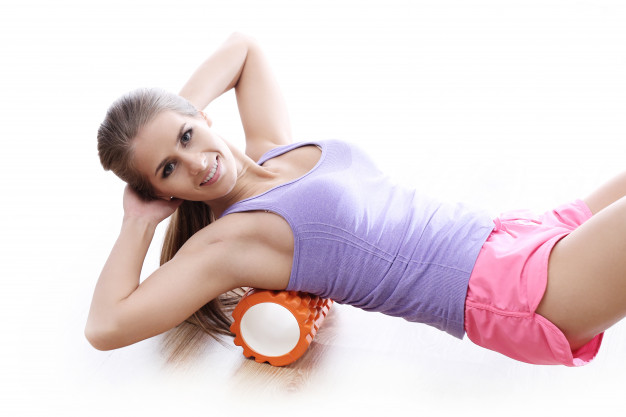As I interact more and more with gym enthusiasts and sports players, I realize that the foam roller that we physiotherapists use in the clinic setting to address dysfunctional tissues and muscles is now widely used for varied purposes. What used to be a rehab tool a few years ago has now become a fitness tool to prevent injuries and improve sports or gym performance. And with good reason! It is indeed a tool that can be easily used for several different purposes. A few of its uses are Myofascial release, Trigger point massage, Posture awareness, Stretching/flexibility, and Recovery technique after a high-intensity activity.
Benefits of Foam Rolling
One of the major benefits for the sports and gym enthusiast is that it can help get rid of tight muscles quickly thereby preventing soreness without the use of massages and other recovery techniques. Let’s examine the science behind it – Eccentric exercise damages connective tissue, which stimulates pain receptors and inhibits muscle activation. Using a foam roller might help repair damage to your connective tissue, thereby decreasing soreness and preventing a drop in performance after a hard workout.
Let’s examine the research behind it – even though several research studies have been done, some conclusive and some not so conclusive; the preliminary verdict is that the foam roller indeed can assist with certain aspects of fitness. A study published in Medicine & Science in Sports & Exercise in 2014 stated that using the foam roller reduced muscle soreness one to three days after the routine; resulted in a small but statistically significant increase in quadriceps range of motion and led to better performance. Another study done by Graham MacDonald and colleagues at Memorial University of Newfoundland in Canada in 2013 showed that after only two minutes of foam rolling, quadriceps range of motion increased by ten degrees and the increase in range of motion persisted for at least ten minutes after the foam rolling. An additional study from The Journal of Strength and Conditioning Research (2013) shows that myofascial release with a foam roller can dramatically increase your range of motion without any negative effects on strength.
Are you a Physiotherapist/ Physiotherapy Student or Intern/ Fitness Trainer/ Running or Cycling Coach?
If yes, then check out my FOAM ROLLING FOR FITNESS & REHAB workshop!
It’s a 2-day, hands-on program specially designed for Fitness Professionals | Certificate of Participation will be given
Register @ https://bit.ly/FR-Pro
Foam Rolling Do’s and Don’ts
While this bodes well for the foam roller and the athlete using it, there are some do’s and don’ts while using it.
If used incorrectly, it can certainly backfire creating more issues than it resolves. Learning correct rolling techniques from your clinician, sports physiotherapist, or fitness trainer for your problem areas is highly recommended.
A few pointers to keep in mind are – avoid bony areas while rolling, use progressively – it is not a pain tolerance test, expect soreness the next day, roll specific to the sports/gym workout/rehab and use a foam roller depending upon your fitness level (soft to medium density/with or without ridges).
So whether you are a runner or like to weight train or just like to sweat it out on the field, the foam roller can be a great tool for recovery!
We have a Health & Fitness Forum on WhatsApp that discusses and posts relevant articles, research, information, and queries.
Discussions about pain, injuries, prevention, nutrition, fitness do’s and don’ts and much more are facilitated.
There are Orthosports team doctors in the group who can assist and enable positive enriched learning.

